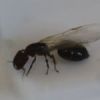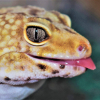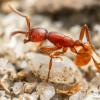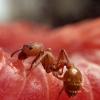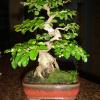I've observed Formica larvae laying nearly dormant for days on end. Then as soon as the colony is fed a large protein meal they seem to double in size overnight. A slight size difference in workers (besides the obviously small size of nanitics) is apparent in my Crematogaster colony. Some workers are simply larger built. There is no difference in their anatomy or proportions, they are just bigger in every way. I think some ants with monomorphic workers show larger degrees of size difference (Formica are a good example). The reason they aren't considered polymorphic is that the proportions of the body are the same. It's the difference between a person being 6 foot 8 inches and a person being 6'8 with 75% of that height being legs that are 45 inches in circumference.
Thanks for the reply FeedTheAnts! Yes, I am aware of the difference between ants in polymorph species.
The reason I mentioned monomorph species is because I have already observed the effect of the diet on polymorphic Messor barbarus. I had a colony that I fed little insect protein, and one that I fed it a lot. Let me share my experience on them;
I believe this was stated previously by other people, but my observation confirms that feeding a lot of insect protein results in increase of major workers being produced.
Sounds counterintuitive since majors are primarily used to crack open seed, which would make you think that the colony that relies on seed more, would want to produce more of majors.
One might say that majors double as warriors, so in order to hunt more insects, they would need more majors. Well, In my experience, majors are more cowardly than minors - who are aggressive, while majors keep flailing, tripping over their huge heads, and running home in hysteria. Quite funny actually. The behaviour might change with the size of the colony though. Majors are more precious since more food was invested in them, so I guess it makes sense to take better care of them while the colony is around 500 workers or less.
I guess I was thinking of Aphaenogaster as Messor's carnivorous, monomorph cousins and wondered whether them too would produce bulkier workers with abundance of food.
It's likely. But I don't have a control colony to compare in the future.
![]() Please share
Please share ![]()

